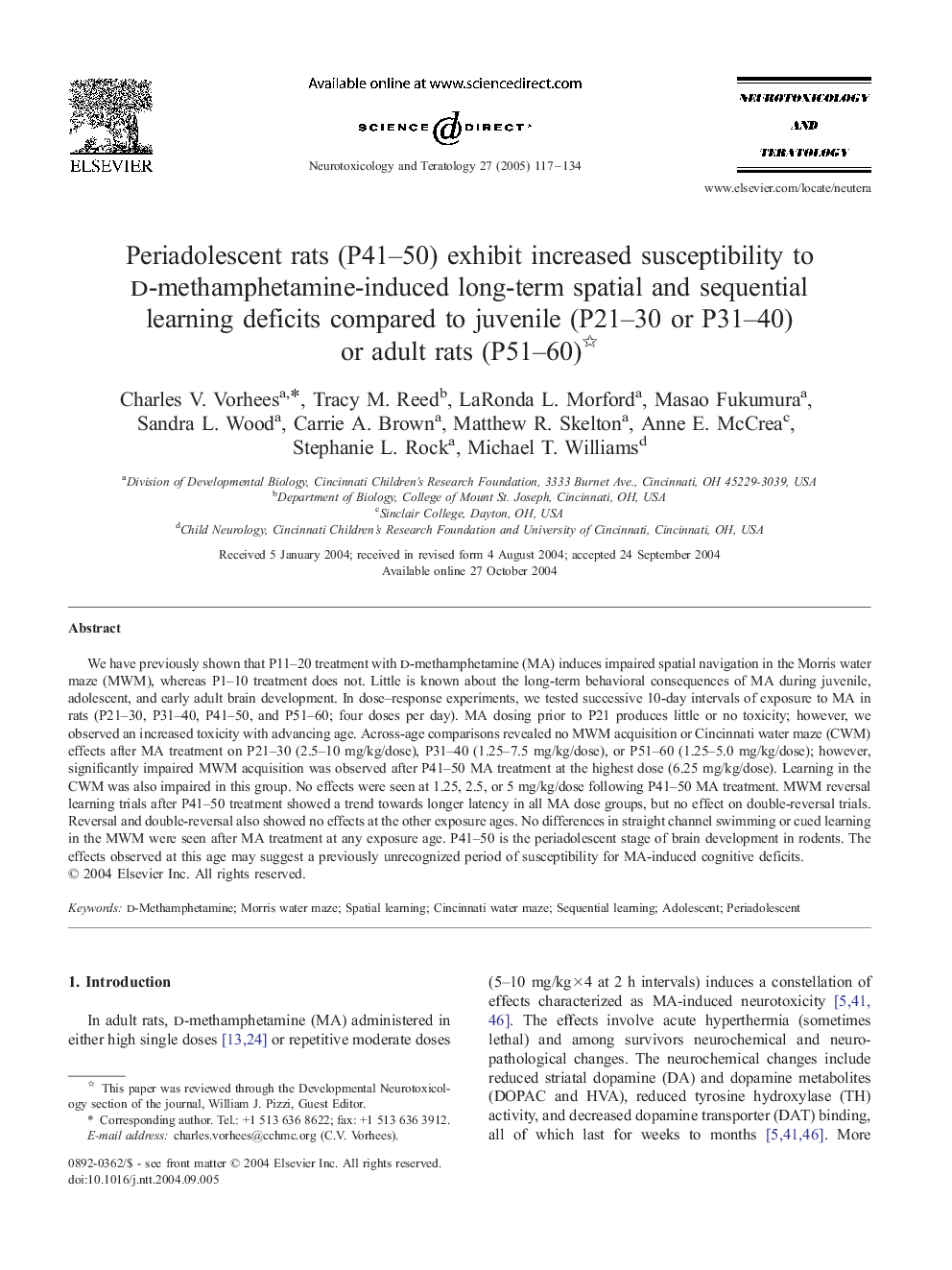| Article ID | Journal | Published Year | Pages | File Type |
|---|---|---|---|---|
| 9032857 | Neurotoxicology and Teratology | 2005 | 18 Pages |
Abstract
We have previously shown that P11-20 treatment with d-methamphetamine (MA) induces impaired spatial navigation in the Morris water maze (MWM), whereas P1-10 treatment does not. Little is known about the long-term behavioral consequences of MA during juvenile, adolescent, and early adult brain development. In dose-response experiments, we tested successive 10-day intervals of exposure to MA in rats (P21-30, P31-40, P41-50, and P51-60; four doses per day). MA dosing prior to P21 produces little or no toxicity; however, we observed an increased toxicity with advancing age. Across-age comparisons revealed no MWM acquisition or Cincinnati water maze (CWM) effects after MA treatment on P21-30 (2.5-10 mg/kg/dose), P31-40 (1.25-7.5 mg/kg/dose), or P51-60 (1.25-5.0 mg/kg/dose); however, significantly impaired MWM acquisition was observed after P41-50 MA treatment at the highest dose (6.25 mg/kg/dose). Learning in the CWM was also impaired in this group. No effects were seen at 1.25, 2.5, or 5 mg/kg/dose following P41-50 MA treatment. MWM reversal learning trials after P41-50 treatment showed a trend towards longer latency in all MA dose groups, but no effect on double-reversal trials. Reversal and double-reversal also showed no effects at the other exposure ages. No differences in straight channel swimming or cued learning in the MWM were seen after MA treatment at any exposure age. P41-50 is the periadolescent stage of brain development in rodents. The effects observed at this age may suggest a previously unrecognized period of susceptibility for MA-induced cognitive deficits.
Keywords
Related Topics
Life Sciences
Environmental Science
Health, Toxicology and Mutagenesis
Authors
Charles V. Vorhees, Tracy M. Reed, LaRonda L. Morford, Masao Fukumura, Sandra L. Wood, Carrie A. Brown, Matthew R. Skelton, Anne E. McCrea, Stephanie L. Rock, Michael T. Williams,
